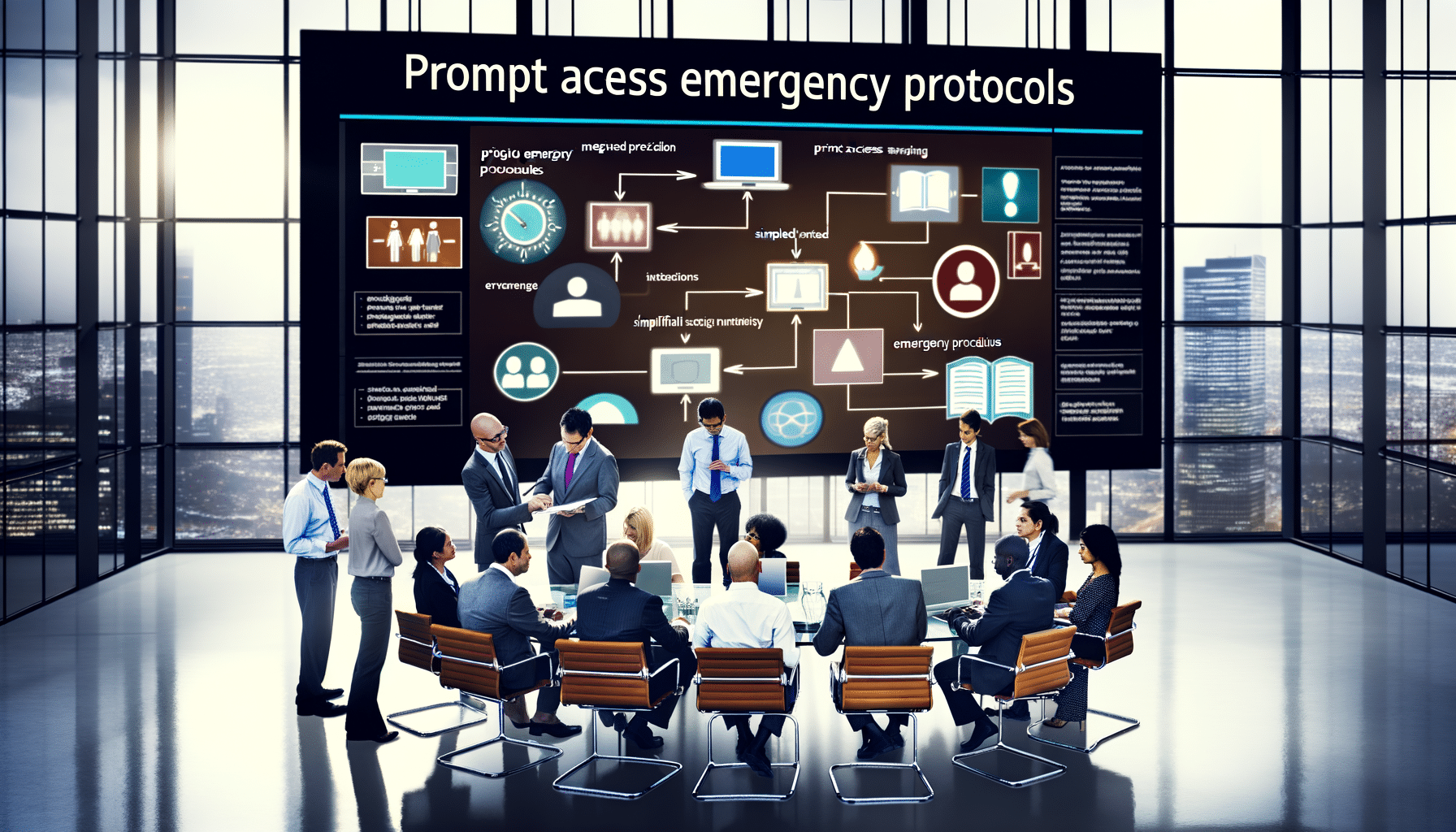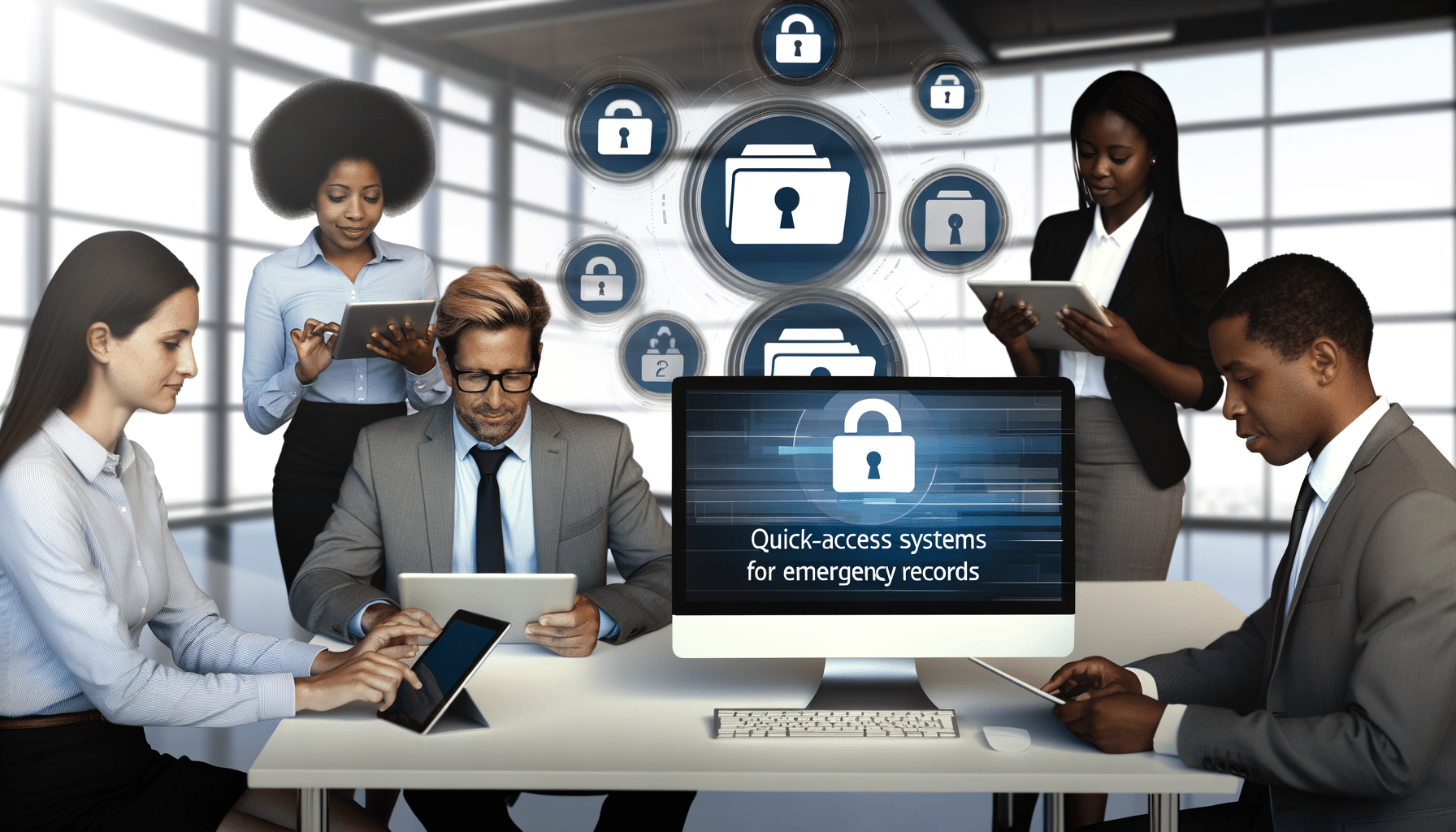- Emergency
- February 3, 2025
Quick-Access Emergency Protocols

Organizing Critical Emergency Documentation
In the fast-paced world we live in, preparedness is no longer a choice but a necessity. Our organizations need to be capable of responding swiftly and effectively to any crisis situation. Whether you’re part of a business, a government department, or managing personal affairs, having quick-access emergency protocols in place can be the difference between chaos and order. Today, I want to delve into why access to emergency protocols is critical and how a streamlined approach can benefit you.
Understanding the Importance of Emergency Protocols
Consider this scenario: A natural disaster strikes unexpectedly, and immediate decisions are required to ensure safety and continuity. Emergency protocols serve as a systematic guide to handle such incidents. They include procedures for evacuation, communication, and safety measures that your team must follow. Having organized and easily accessible emergency protocols can dramatically mitigate the impact of such unexpected events.
Yet, the challenge lies not just in creating these protocols but ensuring they are readily available and comprehensible to all relevant personnel. This is where efficient record management plays a pivotal role. With the advent of technology like RecordsKeeper.AI, companies now have the means to automatically categorize and retrieve these essential documents with ease.
The Role of Technology in Streamlining Emergency Protocols
One of the fundamental issues organizations face is the haphazard collection and disorganized filing of critical documents. Technology, particularly platforms utilizing AI and Blockchain, can fundamentally transform how these documents are managed. For instance, RecordsKeeper.AI leverages AI-powered tools to automatically classify records, making emergency protocols simple to access through natural language queries. This efficiency reduces the time spent searching for information when every second counts.
Moreover, enhancing security with secure data rooms ensures that sensitive emergency details are protected against unauthorized access. This controlled access not only safeguards information but also provides real-time activity tracking, allowing for timely updates and monitoring who accesses what information and when.
Compliance and Accessibility
Beyond organization and security, compliance with regulations such as GDPR, HIPAA, and SOX is a significant concern. An effective record-keeping system should facilitate adherence to these standards by automating regulatory workflows. By ensuring compliance, organizations not only avoid legal penalties but also prevent scenarios where inadequate documentation exacerbates an emergency situation.
Accessibility is another crucial aspect. Emergency protocols must be readily available to everyone who needs them, which necessitates a system where these documents can be accessed virtually from anywhere, at any time. Blockchain integration ensures that these records remain tamper-proof and immutable, guaranteeing that what your team accesses is the authentic, approved procedure.
The Strategic Advantage of Effective Record Management
Implementing comprehensive record management systems like RecordsKeeper.AI turns record-keeping into a strategic advantage rather than a tedious task. Having automated backups and quick recovery options provide peace of mind that even if disaster strikes, backup protocols can be enacted with minimal disruption.
Moreover, detailed audit logs and reports offer transparency into how emergencies are handled, spotlighting areas for future improvement. This continuous learning loop ensures that your emergency response strategy keeps evolving, bolstering organizational resilience.
Final Thoughts
Managing and organizing emergency protocols is essential for effective disaster response. By implementing technological solutions that ensure quick access and compliance, organizations can better prepare and respond to crises, minimizing potential losses and keeping everyone safe.
As someone passionate about leveraging technology to solve real-world challenges, I see the tremendous value in a platform like RecordsKeeper.AI. I invite you to consider how it can transform the way you handle your critical emergency documentation. Following the right protocols could be what sets your organization apart when it matters the most.
Stay informed, stay safe, and keep improving your processes to handle emergencies effectively. For more insights on record management and its applications, follow along with my journey. There’s always more to learn and discover.
Toshendra Sharma is the visionary founder and CEO of RecordsKeeper.AI, spearheading the fusion of AI and blockchain to redefine enterprise record management. With a groundbreaking approach to solving complex business challenges, Toshendra combines deep expertise in blockchain and artificial intelligence with an acute understanding of enterprise compliance and security needs.
Related Posts

Quick-Access Systems for Emergency Records
Setting up quick access for emergency situations.
- January 4, 2025
Archives
- February 2025
- January 2025
- December 2024
- November 2024
- October 2024
- September 2024
- August 2024
- July 2024
- June 2024
- May 2024
- April 2024
- March 2024
- February 2024
- January 2024
- December 2023
- November 2023
- October 2023
- September 2023
- August 2023
- July 2023
- June 2023
- May 2023
- April 2023
- March 2023
- February 2023
- January 2023
- December 2022
- November 2022
- October 2022
- September 2022
Want to get more content like this?
Signup to directly get this type of content to your inbox!!
Latest Post
Document Organization for Facilities
- February 5, 2025
Managing Records for Event Planning
- February 4, 2025
Quick-Access Emergency Protocols
- February 3, 2025
Handling Visitor Access Records
- February 2, 2025





